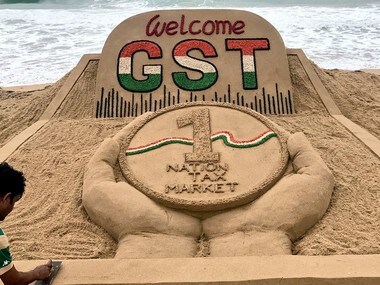Goods and Services Tax (GST) collections slid for a second straight month in February, 2018, to Rs 85,174 crore, as only 69 percent of all assessees filed returns, according to government data. January's collection was Rs 86,318 crore, while in December and November, collections were Rs 88,929 crore and Rs 83,716 crore respectively.
Experts weigh in with their views:
Pratik Jain, Partner & Leader, Indirect Tax - PwC India
The budgeted number for GST collection in FY 2018-19 for the Central Government is much higher than the current trend of revenue collection. While February is a shorter month, still the government would have probably hoped for better numbers. Also, the total numbers of returns filed for February is still around 69 percent of total dealers required to file monthly returns. While it has marginally improved compared to last month, low level of compliance would still be a concern for the government. With e-way bills getting introduced from 1 April, 2018, and other anti-evasion measures being taken currently, the government would expect collections to go up. Collection for March '18 is also expected to be higher on account of year-end accruals and sales push.
Parag Mehta, Partner, N.A Shah Associates LLP
Out of February's collection, Rs 14,945 crore was collected as CGST, Rs 20,456 crore as SGST; Rs 42,456 crore is collected as IGST and the balance Rs 7,317 crores was collected as compensation. The collection may be a bit lower than provisional figures of January due to rationalisation of GST rates for various categories of goods and services in the month of January 2018. The reduction was expected but the same should stabilise. Further, with the introduction of the e-way bill it is expected that compliance levels will improve further and collections will improve. Collections have reduced as compared to July 2017's collection of Rs 94,063 crore, August's Rs 90,669 crore and September's at Rs 92,150 crore. The same may be due to utilisation of transitional credits utilised by various assesses. With GSTN systems being stabilised to a large extent and compliance level increasing, collections are bound to improve in the first-quarter of the next fiscal year. Further, with authorities analysing GST data to determine sectors or areas not paying proper taxes, collections are bound to increase.
Abhishek Jain, Tax Partner, EY India
February's decline would upset government expectations of enhanced GST collections. The next big hope for the government would be the introduction of e-way bills, which may provide a boost to GST collections.
Vishal Raheja, DGM GST, Taxmann
While there is a marginal dip in February's collections, it is noteworthy that compliance has improved and more than 69 percent of all taxpayers have filed returns for month of February. Also, implementation of the e-way bill will certainly increase numbers. The phase-wise implementation of the e-way bill across India will prove to be a milestone for the success of the GST rollout.
Abhishek A Rastogi, Partner, Khaitan & Co
The actual tax collections are about two percent less than the provisional figures so far. However, it should be noted that there are a few days left in the month of March and that assessees are also facing the burden of direct tax payments in the form of advance tax and TDS. The situations of late GST payments cannot be ruled out. GST collection for February has marginally plummeted from the provisional number and even based on January collections. This has been a consistent trend since November 2017. Collections are expected to increase in March 2018 after composition dealers file their quarterly returns. Besides, low collections can also be attributed to sluggish business performance over the past few months and an increase in the outflow of IGST refunds.
Published Date: Mar 28, 2018 11:41 AM | Updated Date: Mar 28, 2018 12:44 PM
